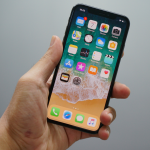Apple Case Patent Uses High-Powered Magnets to Protect Tech from Falls
If you own a smartphone, chances are you’ve dropped it a time or two (or three or four...). Hopefully, you had a protective case or screen protector on it to keep it from cracking or messing up anything internally. Unfortunately, this isn’t always the case—sometimes, even if you do take precautionary measures, your phone can still be damaged in a fall.
Luckily, Apple recently gained the rights to a patent on a protective case. The company filed the patent in March 2015, but it was only made public last month. The patent, titled “Dynamic stabilized magnetic array,” explains how the protective case would use electromagnets to connect devices and accessories to each other.
HOW DO THESE NEW CASES WORK?
Electromagnets within the new case would work alongside traditional magnets to provide a stronger magnetic connection. This solution comes as a response to weaker magnetic fields produced by permanent magnets that are being used in cases today. The magnetic fields produced by permanent magnets can’t adapt to fit every situation, and the magnetic coupling between them may not be strong enough to withstand environments where the peak forces applied to magnetic coupling exceed forces from the magnetic attraction.
Apple believes electromagnets would be useful in preventing devices from breaking upon impact from a fall. The electromagnets in this particular case would be powered by a magnetic field sensor within the magnetic array. When a fall is detected by the case, a few of the electromagnets within the case would deactivate. Once this occurs, the device would be “dragged away” from the side expected to hit the ground by the magnets. As the case hits a hard surface, the space between the case and device forms a “crush zone.” This zone reduces the rate at which force from the impact is imparted on the device, reducing the likelihood of damage from a fall.
The patent focuses on iPad protection, but there is potential for the design to be used for iPhones as well. While Apple has the rights to the patent, there is still a possibility that this case won’t ever be produced.
Using magnets for technological applications isn't anything new for Apple—they've been integrating magnets into their device designs for years, including the 2018 iPad Pro that contains 102 magnets! What do you think about the concept of the magnetic case? To stay up to date on new magnetic patents and other magnet applications, follow our Facebook page and check out our other posts on the blog.

